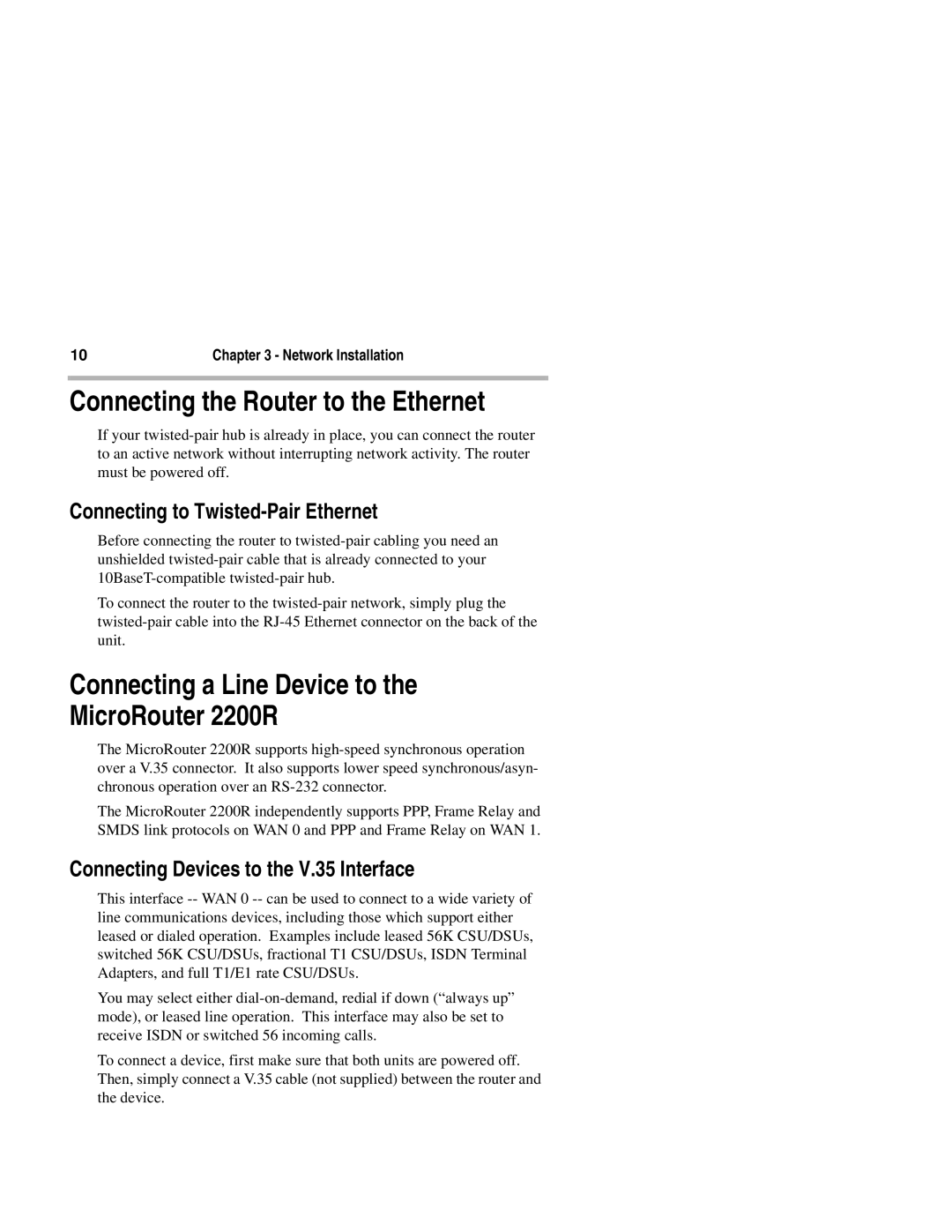10 | Chapter 3 - Network Installation |
Connecting the Router to the Ethernet
If your twisted-pair hub is already in place, you can connect the router to an active network without interrupting network activity. The router must be powered off.
Connecting to Twisted-Pair Ethernet
Before connecting the router to twisted-pair cabling you need an unshielded twisted-pair cable that is already connected to your 10BaseT-compatible twisted-pair hub.
To connect the router to the twisted-pair network, simply plug the twisted-pair cable into the RJ-45 Ethernet connector on the back of the unit.
Connecting a Line Device to the
MicroRouter 2200R
The MicroRouter 2200R supports high-speed synchronous operation over a V.35 connector. It also supports lower speed synchronous/asyn- chronous operation over an RS-232 connector.
The MicroRouter 2200R independently supports PPP, Frame Relay and SMDS link protocols on WAN 0 and PPP and Frame Relay on WAN 1.
Connecting Devices to the V.35 Interface
This interface -- WAN 0 -- can be used to connect to a wide variety of line communications devices, including those which support either leased or dialed operation. Examples include leased 56K CSU/DSUs, switched 56K CSU/DSUs, fractional T1 CSU/DSUs, ISDN Terminal Adapters, and full T1/E1 rate CSU/DSUs.
You may select either dial-on-demand, redial if down (“always up” mode), or leased line operation. This interface may also be set to receive ISDN or switched 56 incoming calls.
To connect a device, first make sure that both units are powered off. Then, simply connect a V.35 cable (not supplied) between the router and the device.
